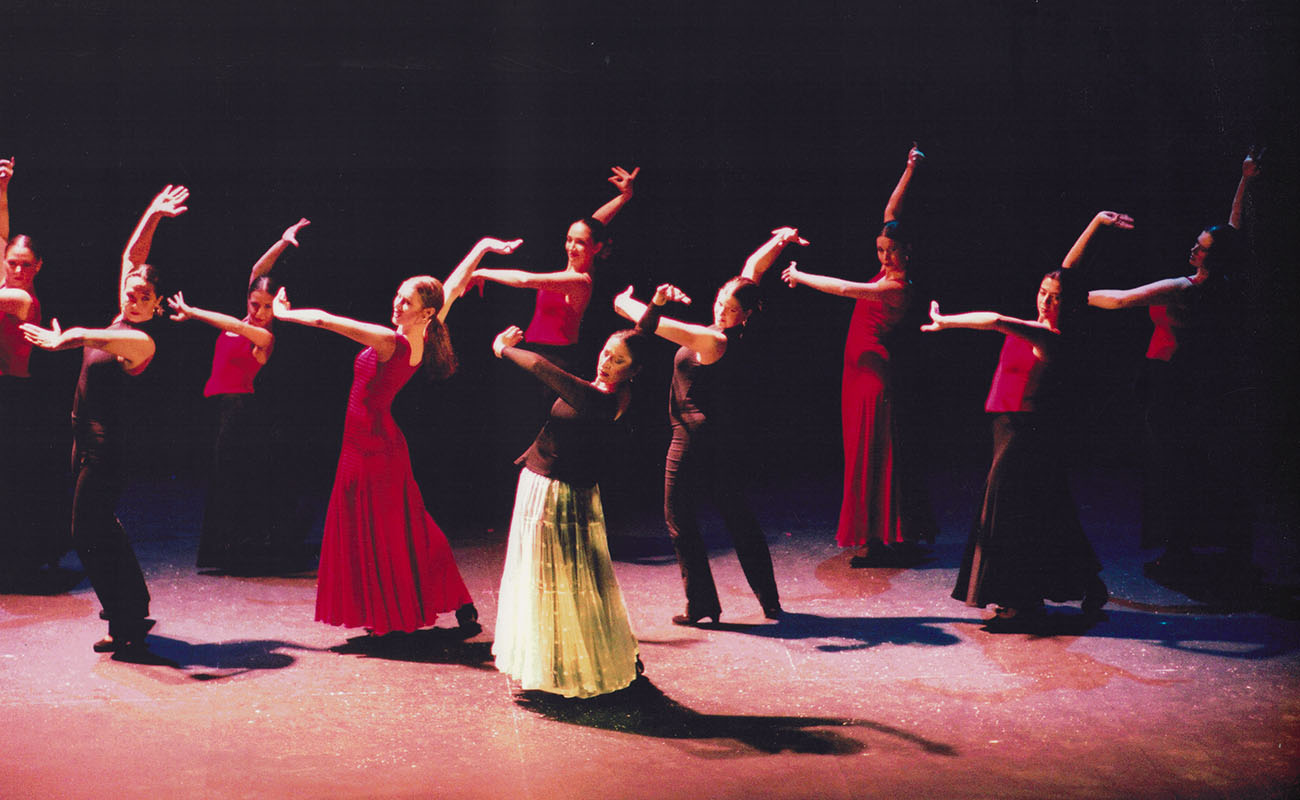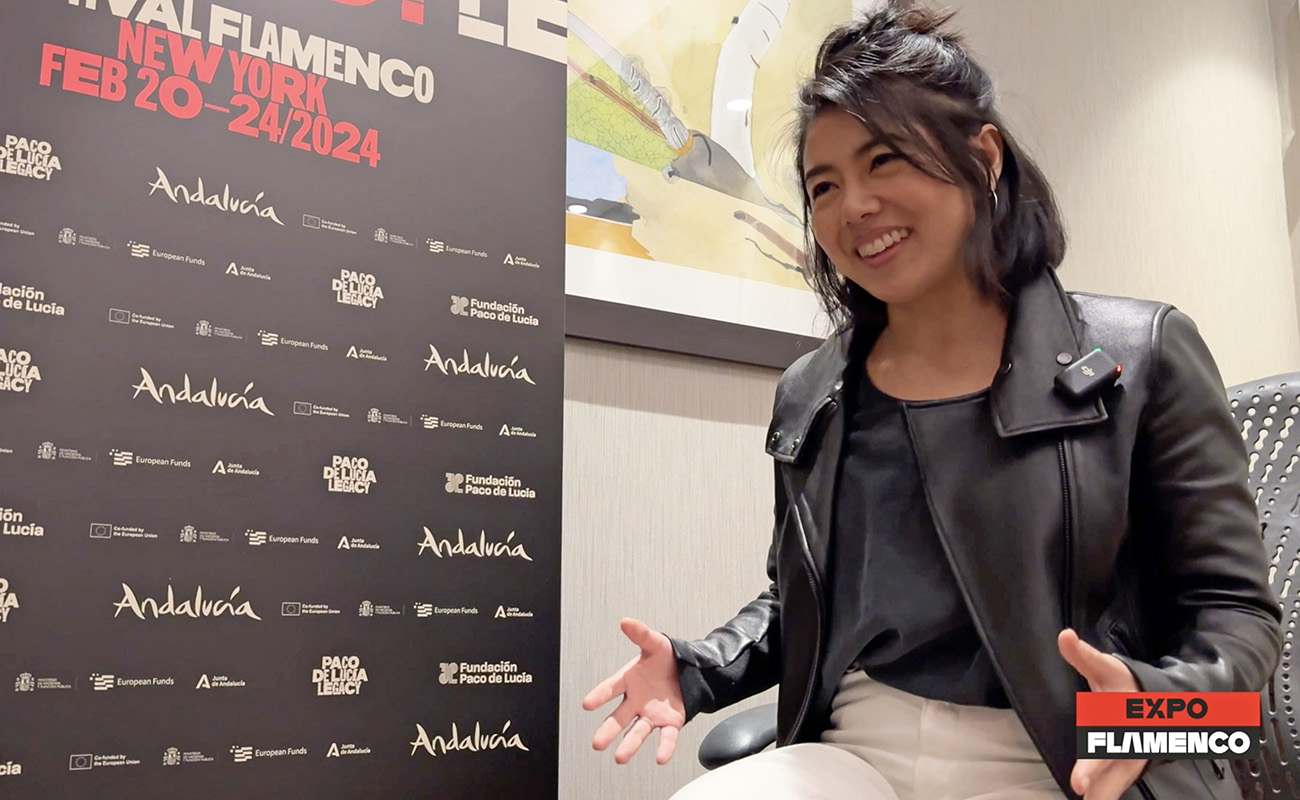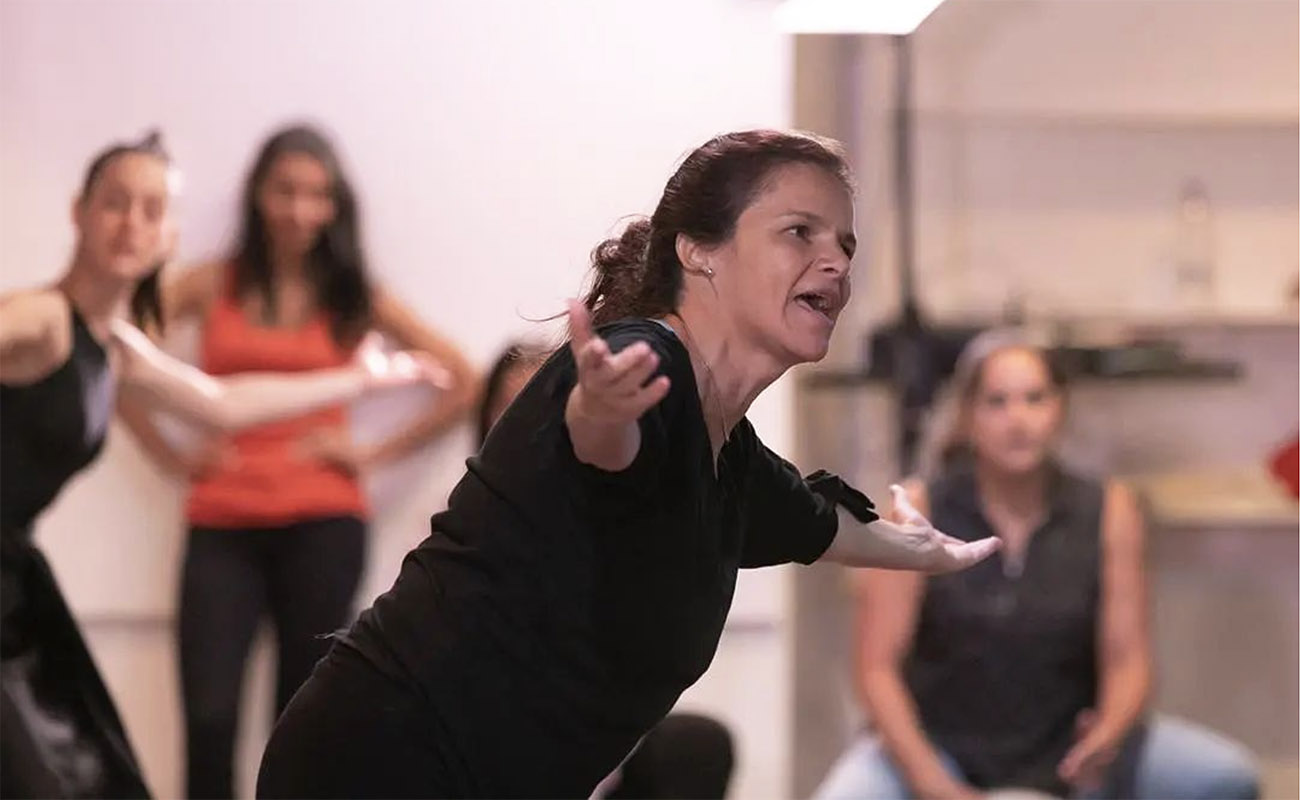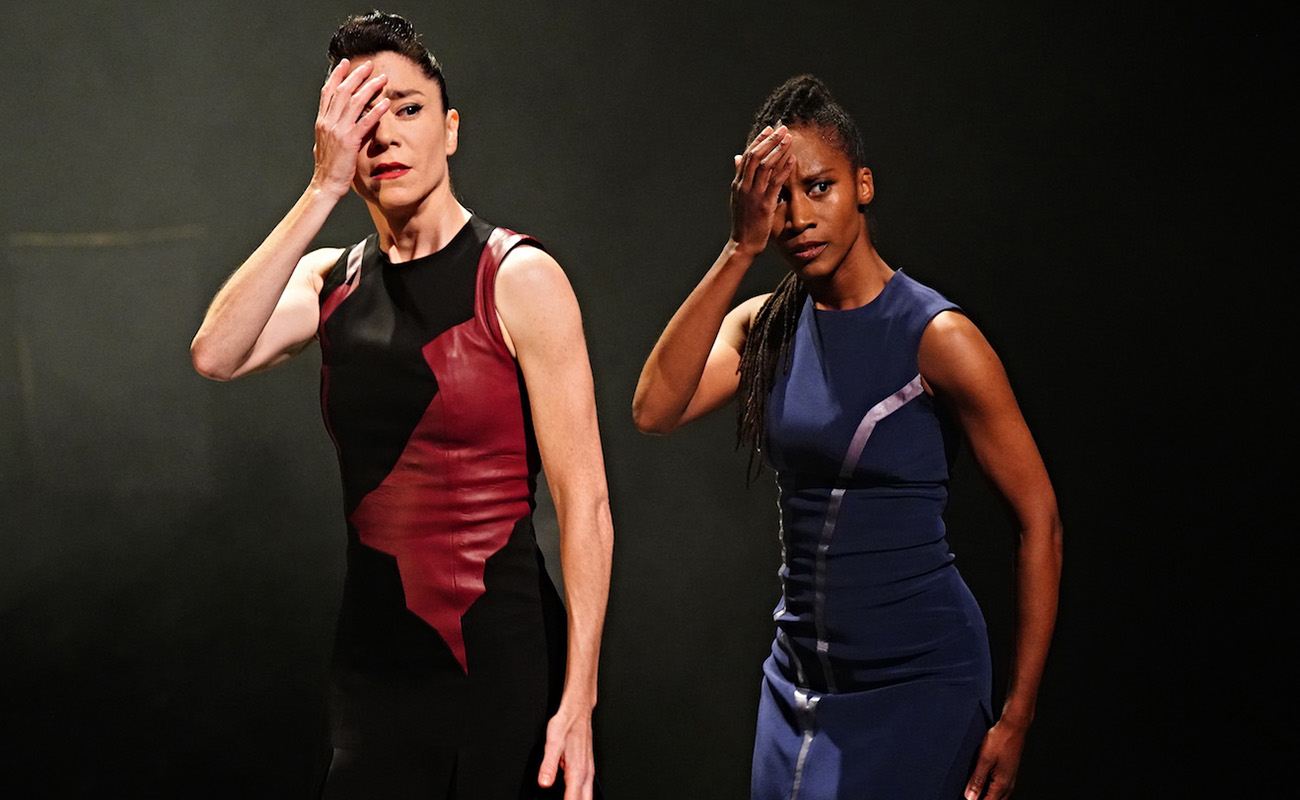Rosario Ancer: «Flamenco was born in Andalusia and lives in our hearts»
Her academy, her company and her festival are a point of reference for flamenco in Canada. Born in Mexico and trained at the Amor de Dios academy in Madrid, Rosario Ancer keeps the Andalusian art alive and well in Vancouver, hometown of her husband, guitarist Víctor Kolstee. «There is nothing in the world like flamenco», she says
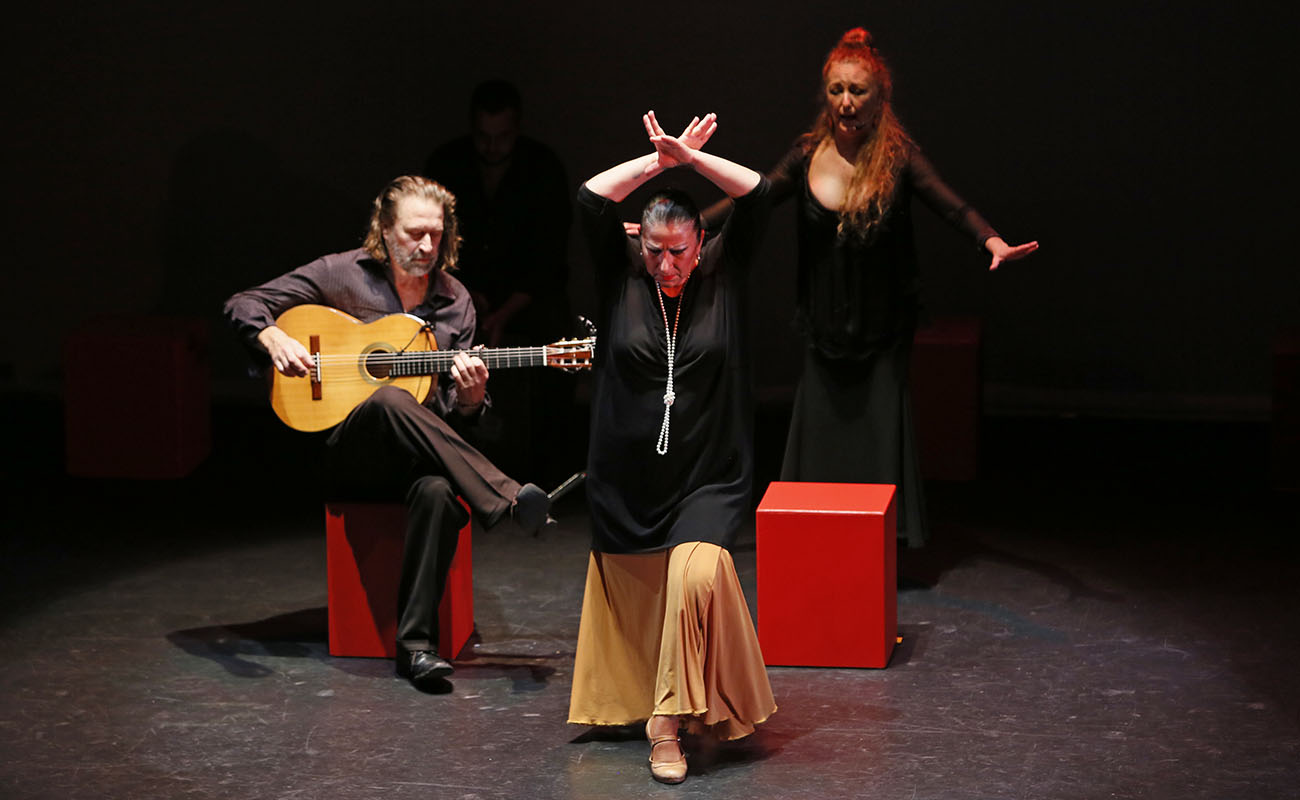
Rosario Ancer is the most solid representative of flamenco art and its teaching in western Canada. In 1989 she settled in Vancouver, a great coastal city in British Columbia, where she has a flamenco academy — Flamenco Rosario — and directs the prestigious Vancouver International Flamenco Festival. We begin our interview with some biographical notes. «I was born in General Terán, Nuevo León, in the north of Mexico. My mother was Mexican and my father had Lebanese ancestry. My father was president of the municipality and owned the sole movie theater in town. I spent my evenings watching movies featuring people doing extraordinary things in beautiful, far-away places. There, when I was just 10 years old, I watched Lola Flores in the movie Pena Penita Pena. Her intense singing style and her attitude left a lasting impression». Later, when she was in college in Monterrey, Rosario attended the Academia de Danza Española y Flamenco Cortijo San Felipe, where she was tutored by her first flamenco teacher, Rosario Zambrano.
«Several years later, in Mexico City, where I attended a performance by the company of Manuela Vargas with Los Junco and legendary cantaor El Moro, flamenco stole my soul and I knew I had to go to Spain to get it back. So, I saved money, sold my car and landed in Madrid, where I studied at the Amor de Dios academy during its golden age. My teachers were María Magdalena, the first teacher to develop a teaching method for flamenco technique, and Ciro, well-known for his creativity and constant improvisation. Both took part in Carlos Saura’s movie Carmen. The introduced me to this unforgettable magical world and I acquired the technique and creativity to develop my own flamenco teaching method. Some of the studies at Amor de Dios were reserved for the Ballet Nacional de España and in the hallways — and at Bar Moca — we would meet artists such as Antonio Gades, Paco de Lucía, Serranito, Carlos Saura, Lole and Manuel, Diego Carrasco, Camarón. In those days, the late 70s, Madrid and Amor de Dios were the mecca of flamenco».
Rosario debuted as professional dancer in the company of Antonio del Castillo, touring in Italy and Portugal. Later she was part of the Arco de Cuchilleros cuadro flamenco in Madrid. There she learned to improvise and experiment, and also learned to understand cante and practiced palmas, seeking her own way of feeling and experiencing baile flamenco. She gained more experience performing with other bailaoras such as Luisa Heredia, part of a distinguished flamenco dynasty and wife of renowned cantaor Vicente Soto ‘Sordera’. In those days she met her future husband and artistic companion, Víctor Kolstee, guitarist from Vancouver, Canada. Victor played at Café Silverio accompanying Rafael Romero El Gallina, among others. Rosario and Victor joined Compañía Paco Mundo y María Velázquez, with whom they spent two summer seasons in Majorca and toured Southeast Asia. Then they settled in Vancouver, in a home overflowing with flamenco.
«When I attended a performance in Mexico City of the company of Manuela Vargas with Los Junco and El Moro, flamenco stole my soul and I knew I had to go to Spain to get it back»
«I had eleven students in the first flamenco class I taught, and it only grew from there», continues Rosario Ancer. «Our academy had an average of 200 students per year. Our first festival, which took place in June 1990, was sold out two months in advance. The time was right, and we had an overwhelming response. Our company and our festival are renowned in Canada’s flamenco scene. There are currently at least three established flamenco academies in Vancouver which also create and perform flamenco productions. Besides, Flamenco Rosario also collaborates with Arts Umbrella — an art and dance academy for young artists with an excellent national and international reputation — where we teach flamenco art and design contemporary flamenco choreographies for its more advanced students. The teaching level in Vancouver and in the rest of Canada is high, particularly the flamenco courses taught by great masters that we organize in summer and during our Festival».
– Generally speaking, how is flamenco art perceived in Canada? Are Canadians interested in this Andalusian artistic expression? Are live flamenco shows performed?
– In Canada, flamenco is considered and exceptional and very well-rounded art form because, even as it’s based on a specific technique and discipline, once technique and compás (rhythm) are mastered, and cante is understood, this art form allows infinite freedom and possibilities for artistic creation. Besides our festival — were every year we showcase Spanish, national and local companies — other international contemporary dance festivals [in Canada] have started to feature flamenco in their programming. We also have some tablao-style cafes that feature weekly flamenco shows and professional artists who take flamenco very seriously, travelling regularly to Spain to sharpen their skills, even as they have learned the flamenco essentials here.
«In Canada, baile is the main attraction, but there is also a great appreciation for flamenco guitar and cante. You would not believe how often people among the public have told me how much they have been moved by cante. Most do not understand Spanish, but they can understand the feeling»
– Tell us about the Vancouver International Flamenco Festival, started by you and your husband. Has it become established as a leading even in North America’s flamenco scene?
– Although nowadays flamenco is highly regarded in Canada as an exceptional, contemporary art form, that was not always the case. When I first came here, I noticed that, even as the public was very receptive, there were many cliches and stereotypes, and flamenco was considered a stale art form, a little more than folklore, when I fact it’s quite the opposite: it’s a living art that cannot be kept or preserved without being changed. Flamenco encourages change, that is why it survives and continues to be relevant. All flamenco artists living in Canada have done our part in promoting this art form, but I can say — and I’m not trying to brag — that our Festival and our company have been instrumental in changing that mindset, thanks to the honest teaching in our classes, our lectures and the creation of original contemporary flamenco productions. It is also very important for our Festival to feature high-quality productions by Spanish and Canadian companies, as well as academics hosting round tables. Then we have dance workshops taught by Spanish artists. All of that has created a knowledgeable public. Although baile is the main attraction, of course, there is also a great appreciation for flamenco guitar and cante. You would not believe how often people among the public have told me how much they have been moved by cante. Most do not understand Spanish, but they can understand the feeling, of course.
– Do you have memories of any particularly brilliant moment in this festival?
– We always invite artists whose manner of creating and performing flamenco productions we can relate to, artists we have already met and admired when we attend flamenco festivals in Spain. Our public has always been enthusiastic about all artists who have featured in our festival, since all of them have gifted us with memorable moments. I always hear people tell me “Rosario, this has been the best year!”. That means that our program improves every year and we are able to surprise our public with the variety of individual artistic styles. I recall two special moments in the Festivals. La Moneta, with her production Muy Especial, got a standing ovation right after the first set, and that went on until the very end. Manuel Liñán, with his production Baile de Autor, moved so much his public that they would not stop talking about it in the lobby, and people didn’t want to leave the theater after the show.
– ¿Does the Anglo-Saxon, North American public prefer traditional or contemporary flamenco?
– Here in Canada, people appreciate flamenco in general, either traditional or contemporary. They appreciate the quality of the artists, the insight and quality of their productions, regardless if they are Gypsy or non-Gypsy, Spanish or non-Spanish. Yet, I have to say that original contemporary productions are opening doors to make flamenco a universal art form.
«Courses of flamenco are a global phenomenon. I am quite certain that there is no other dance genre with as much demand for courses as flamenco»
– What makes you feel the proudest, as a performer and teacher of flamenco in Canada?
– As a performer, I am proud of having found and developed my own style. As an artist, I am proud of having created productions with universal themes. As a teacher, I am proud of having had the privilege to share my knowledge of — and passion for — flamenco with thousands of Vancouverites, in many cases having inspired them to become professional artists. Regarding the Festival, I am proud that it has showcased, and will continue to showcase, the best Spanish, national and local artists
– How do you explain the feeling of flamenco baile to your students in class? Is it harder for them to feel that emotion, since they haven’t experienced flamenco in its natural setting?
– This is a question I am often asked in interviews, and I always have the same answer. Flamenco was born in Andalusia, but its message is universal and it can be understood by all of us, regardless of the place we were born. Flamenco is alive in our hearts, that is where it really is. We give the students the tools: we teach them technique, compás, cante and how all these elements combine to achieve a good flamenco. Then we encourage them to find their own way to feel and express. I never tell my students how they must feel, I just tell them to seek flamenco within themselves
– What is the profile of your typical student? Age? Sociocultural background? Hispanic ancestry?
– There is a wide age range among our students — although most of them are adults — and they come from all sectors of society. There are some Hispanic students, of course, but most are non-Hispanic. Vancouver and Canada are very diverse and multicultural — a blend of different cultures, like flamenco itself — so flamenco art allows them to have a point of reference, a sense of belonging that makes them feel welcome.
– ¿What is lacking in flamenco art to make it even more popular in Canada and the USA?
– Nothing in the world compares to flamenco. It is one of the most popular art forms. It is a Spanish art genre that appeals to non-Spanish people. From this perspective, flamenco has taken off in Canada, the USA and all over the world. One of the things that have contributed to a greater popularity in recent years is the fact that Spanish artists have gone beyond performing traditional baile, that is, dancing for the sake of dancing. Artists have started to use flamenco art to take more personal messages to the stages. This makes perfect sense, because flamenco is essentially a personal art form. The public then is gifted with a personal message from the artists, besides enjoying a good flamenco show. This combination is pure gold.
«When I first came to Canada, flamenco was considered a stale art form, when I fact it’s quite the opposite: it’s a living art that cannot be kept or preserved without being changed. Flamenco encourages change, that is why it survives and continues to be relevant»
– Do you think that the role of teachers of baile flamenco is underappreciated on the international stage?
– Flamenco teachers — Spanish and local — are greatly appreciated by both aficionados and professional artists. I don’t think this only happens in Canada. Courses of flamenco are a global phenomenon. I am quite certain that there is no other dance genre with as much demand for courses as flamenco.
– Have Canadian flamenco performers developed a particular style?
– There are all kinds, and I am sure this also happens in Spain. Some seek to imitate other artists and just perform, while others seek to develop a personal style. Although in the beginning the students must imitate their teachers, I encourage the latter.
– What has flamenco contributed to your personal life?
– My production Mis Hermanas tells it all. Flamenco gave direction to my life. It was because of flamenco that I met my husband — partner in my life and in my career — and that I have a beautiful family, children and grandchildren. When I arrived in Canada, I did not speak much English. Flamenco gave me a voice and the opportunity to communicate and channel my energy and my creativity, the privilege to serve others and the opportunity to make others happy with my teaching and shows. There is not enough space to explain all the thank-you notes I have been given in my life. I feel very fulfilled personally and artistically and I am in a very mature and special stage in my life.
– Do you have words of comfort for fellow flamenco artists in these dark times of pandemic and lockdowns?
– These are very uncertain times, but we are all together in this. Things will change, without a doubt, but I am sure that we will find the creative means to keep performing and teaching. Flamenco artists can be certain that demand [for their art] will always exist, but it is also true that there will be changes and we all will have to adapt. Although we had to cancel the public performances of our Festival this year, we are keeping in touch with our invited artists so we can offer some kind of on-line performance. We are already planning the 2021 Internacional Flamenco Festival. We are still here striving in behalf of flamenco!
Top image: Scene from the production Fast-forward Rewind by Rosario Ancer’s Flamenco Rosario Company, Vancouver, 2015. Photo: Tim Matheson.



